Australian Tropical Rainforest Plants - Online edition
Piper hederaceum (Miq.) C.DC. var. hederaceum

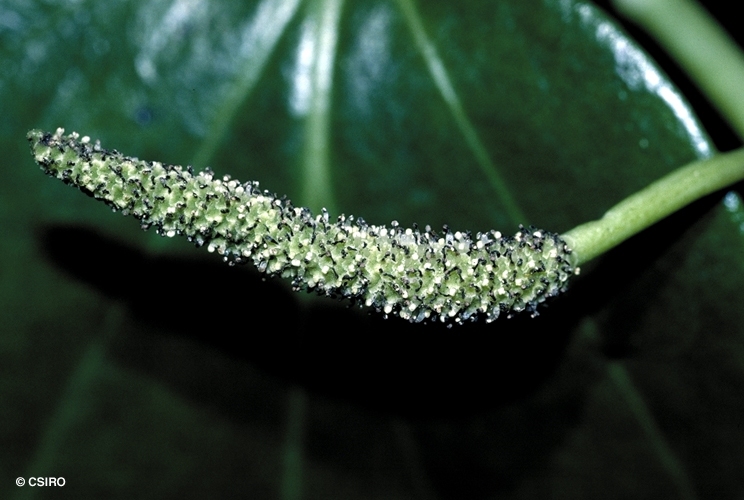
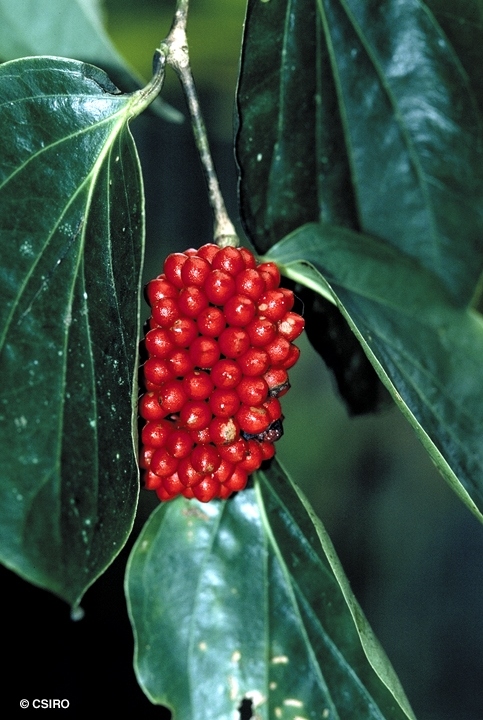

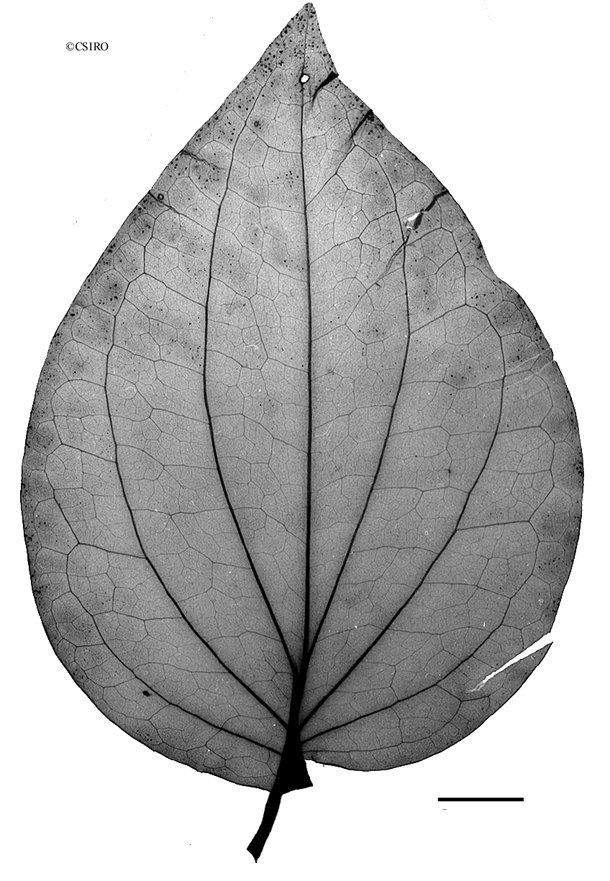
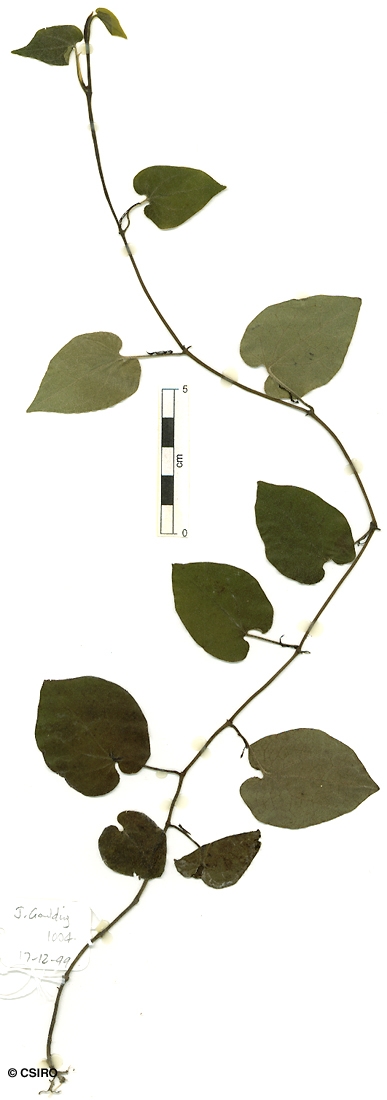

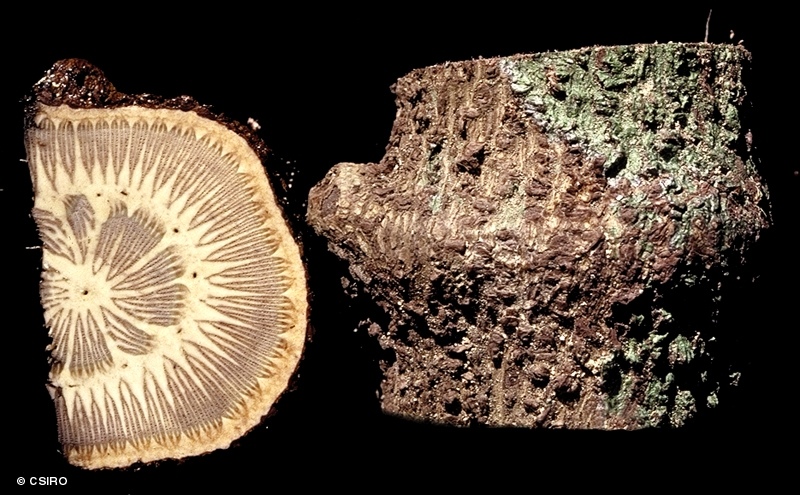
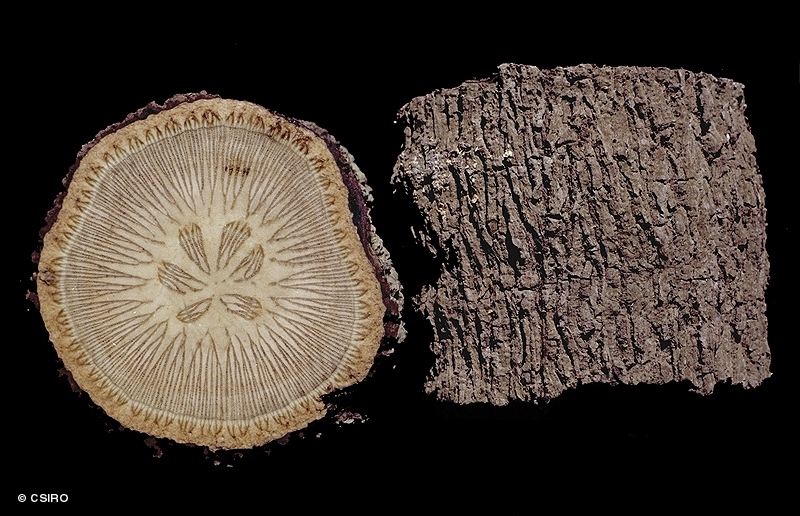
Candolle, A.L.L.P. de (1869) Prodromus 16(1): 353.
Native Pepper Vine; Pepper Vine; Vine, Giant Pepper; Vine, Pepper; Vine, Native Pepper; Australian Pepper-vine; Giant Pepper Vine; Giant Pepper; Climbing Pepper
Male flowers: Inflorescence about 2.5-3.5 cm long. Individual flowers minute. Peltate scales about 0.5-0.7 mm diam. Stamens about one to four, associated with each flower or scale and extending beyond the scale at anthesis. Female flowers: Inflorescence a short, dense spike about 12-15 mm long. Flowers about 12-15 mm long, each flower subtended by a peltate scale or bract which fills the space between the flowers. Ovary green. Stigmas white, 2-5-lobed.
Infructescence a bright red cylindrical structure about 5-6 cm long, peduncle about 2 cm long, produced opposite the point of attachment of a leaf. Individual fruits broadly ellipsoidal, apex pointed, fruits about 8-10 x 6 mm on a stalk about 6-9 mm long. Seeds ellipsoidal, pointed at one end, each seed about 5-7 mm long. Embryo small. Embryo structure difficult to observe (interpret). Either the embryo is enclosed in a broadly conical structure about 1.5-2 x 2 mm or the whole structure is part of the embryo. If the embryo is regarded as enclosed in this structure then the true embryo is about 1-1.5 mm long with the cotyledons about as wide as but shorter than the radicle.
Cotyledons cordate to reniform, about 18-27 x 18-27 mm, hairy on both the upper and lower surfaces. First pair of leaves cordate, upper and lower surfaces densely clothed with hairs. Venation palmate. At the tenth leaf stage: leaf blade cordate, apex acute, base auriculate, upper and lower surfaces densely clothed in short hairs. Venation palmate. Stipules glabrous, about 9-12 mm long, enclosing the terminal bud and leaving an elongated triangular scar on the upper surface of the petiole. Adventitious roots emerging from the stem at each node. Oil dots irregularly shaped, +/- visible to the naked eye. Leaves emit a spicy odour when crushed. Seed germination time 43 to 97 days.
Fruit eaten by Golden Bowerbirds and Victoria's Riflebirds. Cooper & Cooper (1994).
Wood material of this species was active against some tumors. Collins et al. (1990).
Queensland's famous medical investigator, Dr Joseph Bancroft, found it an excellent stimulant tonic to the mucous membrane, and used it in the treatment of gonorrhoea. The active principle which Bancroft extracted with ether, has a 'warm, aromatic, pleasant taste, and a benumbing effect on the tongue, when applied to it in minute quantity'. In recent studies by Australian scientists alcoholic extracts have shown activity against one form of lung cancer in mice. Cribb (1981).





